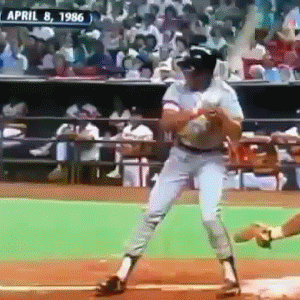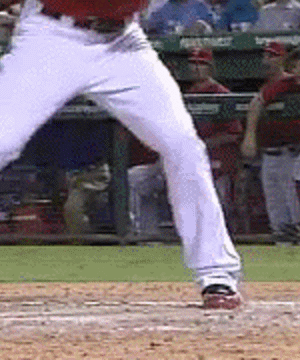I'm trying to get some clarification on how to properly screw the foot into the ground to setup for the Move. I'm sure that this is wrong, but my initial impression of the sequence of screwing the foot into the ground is as follows:
1. Put the rear foot down flat with the heel down. The foot should be square to the plate or slightly toed in.
2. Position front foot in the box and get into the stance.
3. With a firm rear leg, try and rotate the rear leg clockwise (rotate at the hip not ankle or twist at the knee).
The results of this seems to be a screwed in rear foot. However instead of feeling pressure on the inside of my foot, the pressure is on the outside of my foot (almost like it wants to rollover). Now I can lift my toes and force the pressure back onto the inside of my foot to simulate what I've read to be right feeling, but I pretty sure it's not the correct way to setup.
I would really appreciate someone else's sequential description of setting up (screwing in) for the move. Many of the posts that I've read on the matter speak more in generalities and of feel, and I've had a hard time putting the correct sequence together in my mind.
1. Put the rear foot down flat with the heel down. The foot should be square to the plate or slightly toed in.
2. Position front foot in the box and get into the stance.
3. With a firm rear leg, try and rotate the rear leg clockwise (rotate at the hip not ankle or twist at the knee).
The results of this seems to be a screwed in rear foot. However instead of feeling pressure on the inside of my foot, the pressure is on the outside of my foot (almost like it wants to rollover). Now I can lift my toes and force the pressure back onto the inside of my foot to simulate what I've read to be right feeling, but I pretty sure it's not the correct way to setup.
I would really appreciate someone else's sequential description of setting up (screwing in) for the move. Many of the posts that I've read on the matter speak more in generalities and of feel, and I've had a hard time putting the correct sequence together in my mind.







